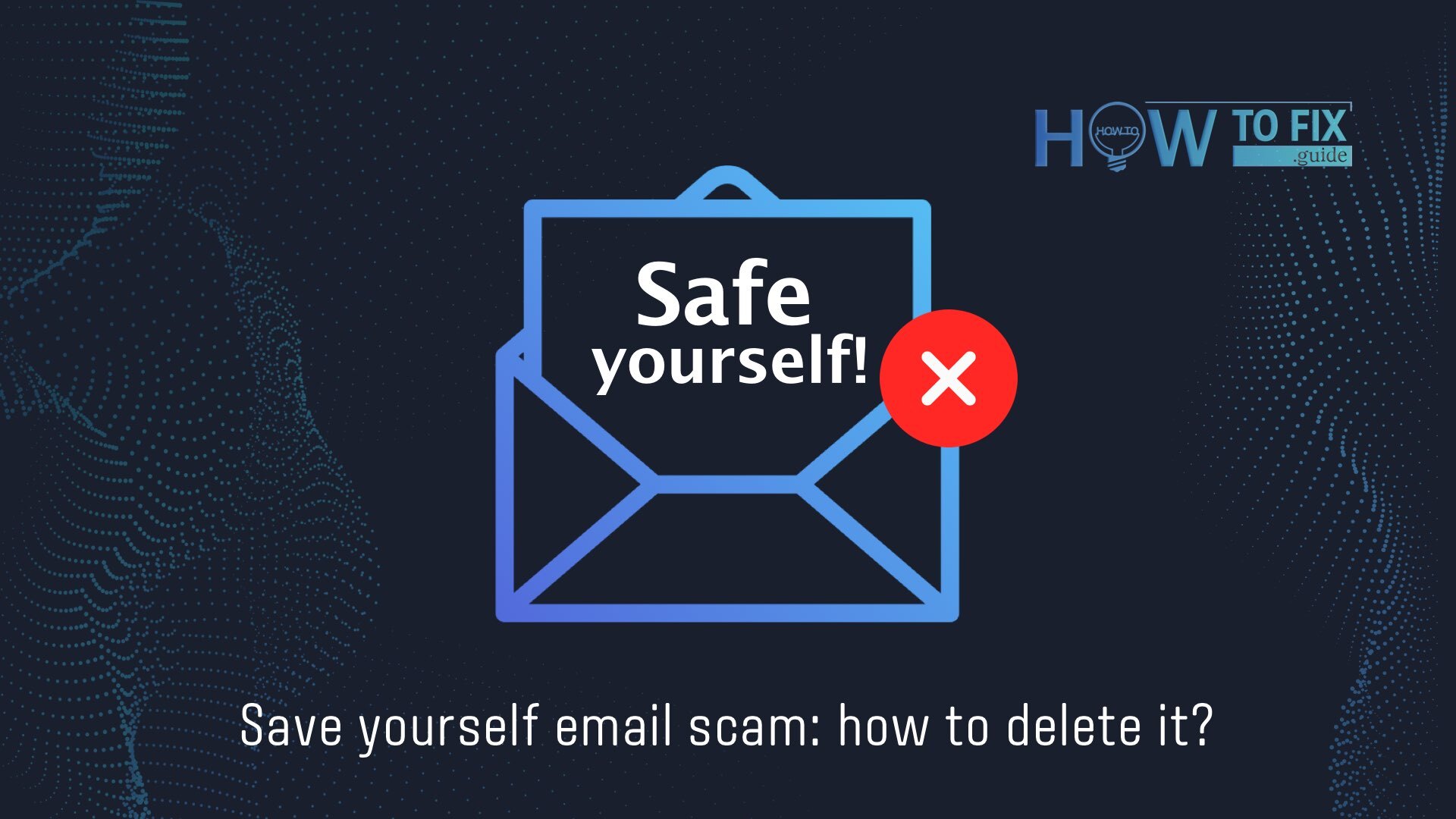Users who use email can face different types of attacks. This can be both a hidden attack and quite visible. The attackers may try to manipulate the user, pressure him, extort money and steal confidential data. In this article, we will consider one of these attacks, which is called “Save yourself”. We have considered the characteristics of this attack, its features, how to avoid it, and how to avoid it.
What is the “Save yourself” email scam?
Save yourself is a fraud in which an attacker claims to know your confidential information and extorts money to give it to you. This attack involves deception of users and manipulation through which tries to gain time and money from the user. In fact, fraudsters may not have your data but pretend to leak your photos, passwords, and other confidential data to the network. The purpose of this attack is to frighten you, deceive you, and get what you want for your evil intentions.
Save yourself is an entire company that has developed a large number of methods to influence the user. They clog your email spam box, the number of such emails can reach more than 100 pieces per day on the same email address. But users do not always pay attention to this kind of email and simply ignore it. And you should delete such emails because a crowded e-mail spam box will eventually produce errors that the user did not expect to see. Intruders extort an average of just under $1,000. But also let us not forget that the same intruders give the user some time to pay, on average 48 hours. It’s a lot of money just to give it to a crook.
Read Also: How to legally get spam email revenge. Fraudsters are just trying to keep you on their ads, or something, by sending out a huge number of letters, but sometimes they manage to achieve their intended goal due to this.
Why Does a Scam Email Contain Your Password?
You’re probably wondering how a crook could have known your password, how he knows it’s really data for my account login. Yes, indeed the fraudster may have your password and login and often this happens due to the data leak. If you do not use protection for your device, you may unconsciously install malware or allow a non-reliable site to process your data, which may cause a leak to the network. Or you were registered to some website that was hacked and all your data came up. Also one of the most common methods is to collect information about you through surveys and lotteries on websites.
Is There Actual Malware Installed on Your Computer?
Fraudsters in their letters follow a certain pattern, which works. They claim that you have malware installed on your computer that allows the world to see your data, and they (intruders) as good rescuers will be able to remove it, but for a certain amount of money.
Let’s get this over with. If the malware really gets on your computer, it will not notify you by email, suggest you destroy it, or other. It will just slow down your PC and all. Be vigilant, read a number of such fake letters of extortion, and do not become a victim of fraudsters.
How to Prevent Getting Spam Tools?
- Access your website securely from any location. When working with a domain, blog, or site, you need permanent management, encryption, or content creation where you need to connect more often to a content management service or server. One important solution for protecting your content and creating a denser network is a fixed IP address. This will help you avoid creating a problem for the system administrator and the server for which the connection and actions are necessary.
- Recover files after data-affecting malware attacks. Malware is the most common problem that leads to the loss of images, system files, documents, videos, and other important files.
- And if the infection of malware is more significant then the data loss is more significant. After some attacks, data is almost impossible to recover, but still, the right protection on your Pc can handle it. Security can help you keep your data in order and protect you from data leaks and more robust cyber attacks.
User Review
( votes)



